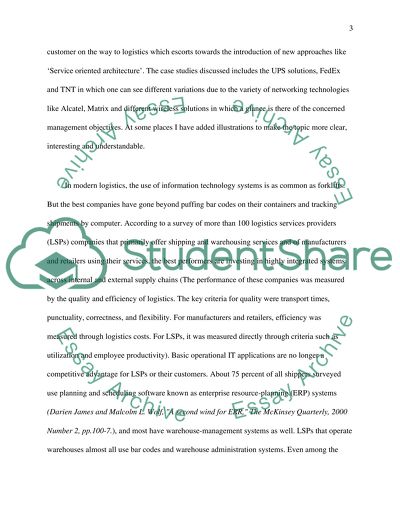Cite this document
(“Impact of IT on Transport and Logistics Essay Example | Topics and Well Written Essays - 3000 words”, n.d.)
Impact of IT on Transport and Logistics Essay Example | Topics and Well Written Essays - 3000 words. Retrieved from https://studentshare.org/technology/1503995-impact-of-it-on-transport-and-logistics
Impact of IT on Transport and Logistics Essay Example | Topics and Well Written Essays - 3000 words. Retrieved from https://studentshare.org/technology/1503995-impact-of-it-on-transport-and-logistics
(Impact of IT on Transport and Logistics Essay Example | Topics and Well Written Essays - 3000 Words)
Impact of IT on Transport and Logistics Essay Example | Topics and Well Written Essays - 3000 Words. https://studentshare.org/technology/1503995-impact-of-it-on-transport-and-logistics.
Impact of IT on Transport and Logistics Essay Example | Topics and Well Written Essays - 3000 Words. https://studentshare.org/technology/1503995-impact-of-it-on-transport-and-logistics.
“Impact of IT on Transport and Logistics Essay Example | Topics and Well Written Essays - 3000 Words”, n.d. https://studentshare.org/technology/1503995-impact-of-it-on-transport-and-logistics.


